Fujifilm X100VI (6) Camera Review
Dustin Abbott
May 6th, 2024

The Fujifilm X100VI is the one that broke the internet.
We are living in an era where the proliferation of cameras in phones has meant that year over year sales of major camera brands is typically declining each year…until the X100VI. Excitement over this new camera has trigger scalping, hoarding, the necessity of lottery systems to determine who can buy one ahead of launch, and the general mayhem that comes with a “must have” item. So is this new Fujifilm X100VI worth the hype? Find out by watching my video review below…or keep reading.
Follow Me @ YouTube | Patreon | Instagram | Facebook | DA Merchandise | Flickr | 500px | X
Thanks to Fujifilm Canada for sending me a review loaner of this camera. As always, this is a completely independent review, and the thoughts and opinions expressed here are my own.
__________________________________________________________________________________________________
So what is the X100 lineup? The X100VI is the latest iteration in a retro-inspired series that Fuji calls “premium compacts”. They are dial-based, analog style digital cameras with a fixed lens (a 23mm F2 lens that gives a roughly 35mm full frame equivalent angle of view). I’ve had to play a little personal catch-up, as while I have been reviewing Fuji products for about six years now, I’ve not actually used any of the previous iterations of the X100. On paper, I’m personally less interested in a camera with a fixed lens. It was the whole idea of interchangeable lenses that made me switch from a superzoom point and shoot to buying my first DSLR.

But there are also many, many photographers who crave the purity and simplicity of a camera with a fixed lens. These purists are more about the craft, the art of photography, and less about variety of gear. They like the idea of always having the same tool on hand and learning to use that tool exquisitely well. And frankly, I was pretty inspired by the work of someone like Jonas Rask and his take on the X100 series. The guy is an amazing photographer, and he helped me really appreciate the appeal of the X100VI. The Fujifilm X100 series is a purist’s camera, with a very vintage aesthetic that looks and handles more like some of my vintage SLRs than like many modern cameras.
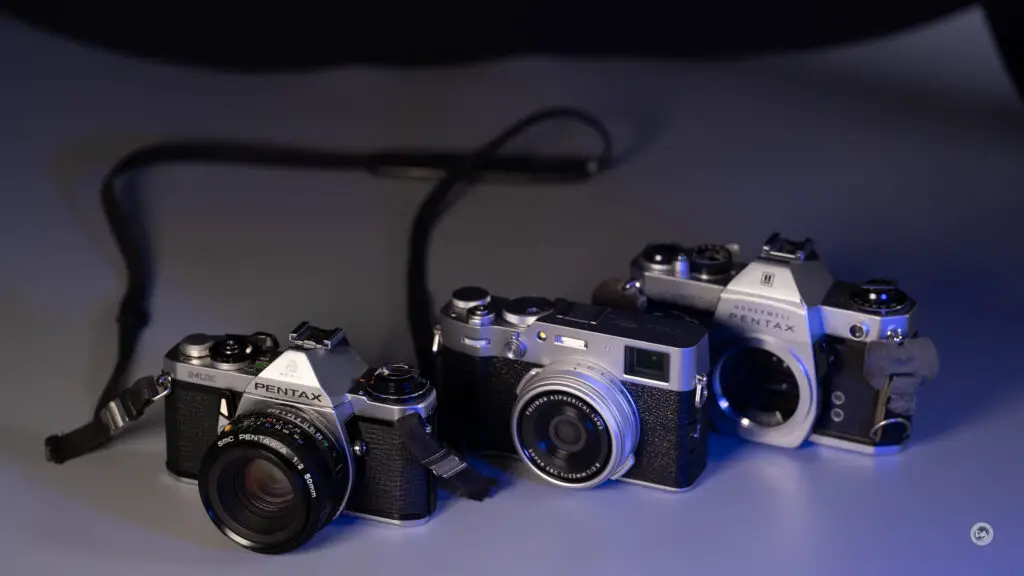
I shared the camera around with some of my team, as while we were all aware of the hype surrounding the camera, none of us had ever used one. We all agreed that there was a bit of a learning curve. That’s not just coming from other camera brands, but even when coming from Fuji. I’ve reviewed 12 previous Fujifilm cameras, so I have a lot of familiarity with their menus (which is similar here) and their typical physical control scheme. But the X100VI has some things in different places than other Fuji cameras, so figuring out the control scheme took a bit for me (i.e. the shutter speed control ring has an outer ring that needs to be lifted up to control ISO, for example…which is NOT obvious!)
But Craig from my sister channel Let the Light in TV put it well: the longer he used the camera, the more he liked it. This is more than a bit of nostalgia; this is a highly capable imaging machine.

Spec List
Primary updates to the X100 formula:
- 40MP BSI CMOS Sensor
- 6 Stop IBIS (In Body Image Stabilization)
- X Processor V – AI machine learning and trackable subjects
- New film simulations (Reala ACE, Nostalgic Neg and Eterna Bleach Bypass) = 14 total
- Ability to upload photos directly to cloud from camera
- Up to 6.2K Video
- AF Tracking in video mode
- HEIF capture
- Skin smoothing effect
- White priority and Ambience Priority Auto WB modes
- Custom AF zone areas
- Option to limit available AF area types for AF-S or AF-C shooting
- Pre-shot bursts (E-shutter + Cont H)
- Self timer lamp on/off
- Interval shooting with external timer
- Interval priority mode (prioritizes chosen interval, irrespective of exposure time)
A big part of the excitement over the X100VI is over several huge feature upgrades. The two most significant is the transition from the 26MP X-Trans sensor found in the X-T4 to the 40MP X-Trans sensor found in the X-T5 and the inclusion of a new, miniaturized IBIS (In Body Image Stabilization) system that is rated for up to 6 stops of stabilization. This makes the camera more useful (in particular) for video capture, which has become increasingly important in this day of hybrid stills/video imaging. So let’s break down the camera down in greater detail.
Build and Features
The X100VI shares a lot of visual similarities to Leica’s M rangefinder bodies. They both have a squared, retro design that oozes hipster coolness. I would argue that a large part of the “gotta have it” desirability factor has to do with the fact that the X100 series is essentially a poor man’s Leica. There’s a lot of similar qualities, save that the X100VI retails for $1600 while the Leica M cameras typically cost more like $9000!

Look no further than Fuji’s own marketing:
“See. Frame. Create.
Enjoy photography in its purest form with Fujifilm’s X100 Series digital cameras.
Using a timeless dial-based design, passed down from model to model,
the stunning 6th-generation X100VI offers an indulgent, tactile image-making experience
that delivers unforgettable content in every creative moment.”
It’s not often that I see the word “indulgent” used in camera marketing!
Yet it is true. There’s nothing here in terms of technology that isn’t available in other arguably more practical Fuji models, but like many other trendy items, it is the aesthetics and packaging here that make the X100 series so desirable. What’s ironic is that the throwback design with so many film-era cues isn’t really marketed to grizzled film-era photographers…all of the marketing has chiseled 20 something hipsters look stylish while taking photos with the X100VI.
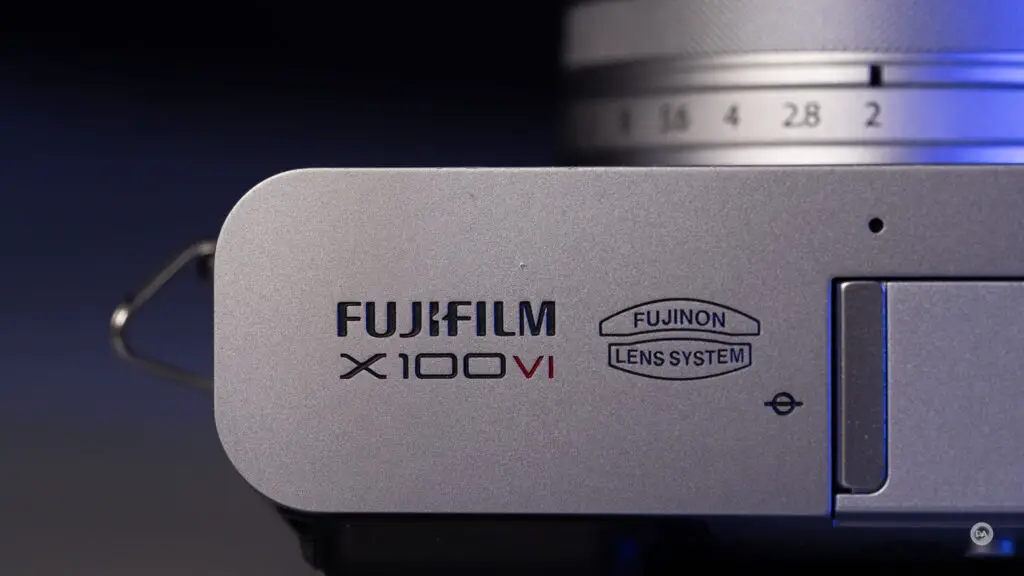
Kudos to Fuji for crafting a beautiful bit of photography art. The machined aluminum frame looks great, with a grain that does remind me of my classic SLRs. This is set off by the vintage leather texture of the lower half of the camera.
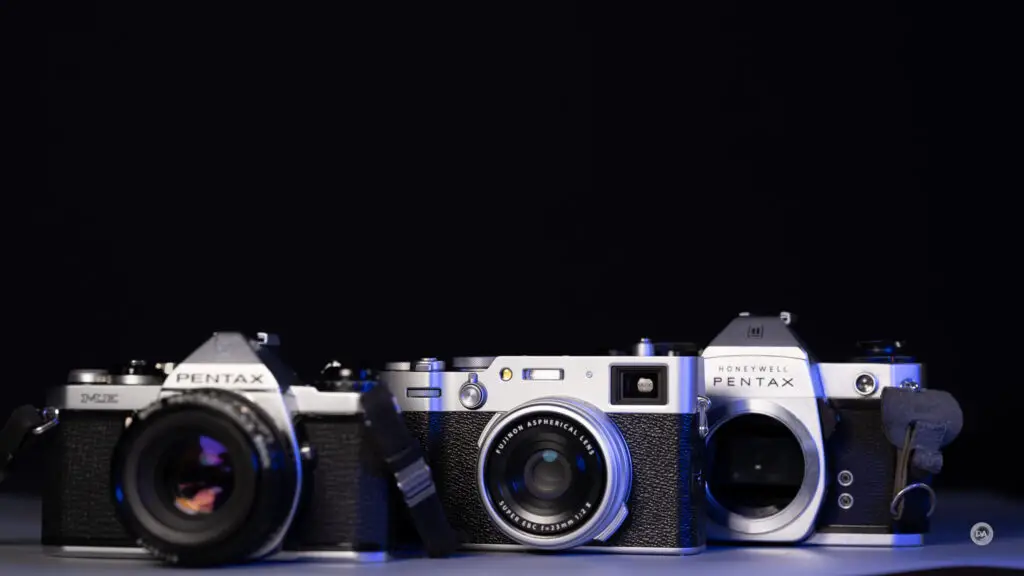
The camera is also available in black, but I do love the look of Fuji’s silver finishes more, personally.
Unfortunately that stylish exterior does come at the cost of ergonomic practicality. There is a very slight bulge on the right side of the camera that serves as the grip, but there’s nowhere near enough depth there to actually wrap your fingers around. This is more a camera that you pinch rather than one that settles into your grip. The minimal height of the camera also means that my pinky has no place to go and has to float underneath the camera.
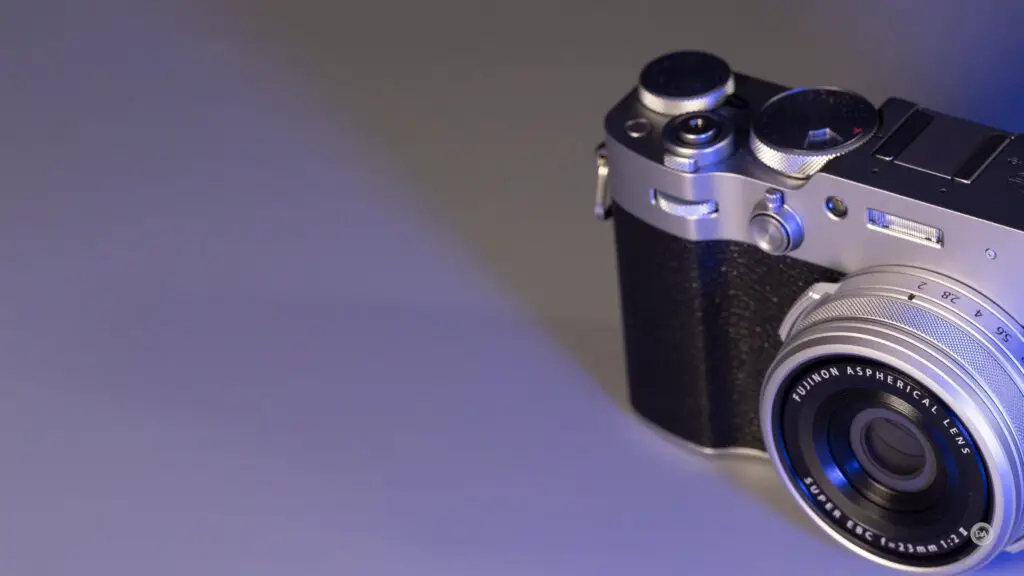
The tradeoff is that this is a very slim profile (aided by the pancake style lens) that will be very easy to bring along. The camera is 128.0mm in width (5″), 74.8mm in height (2.9″), and just 55.3mm in depth (2.2″). The weight is a little more substantial at 521g (1.1lb), though that is with the battery and memory card…and remember that this figure includes the weight of a lens because of the fixed lens.

The X100VI is an interesting mix of modern and retro. The retro portions have to do with the control schemes. We have a profusion of dial-based controls, though there are actually fewer actual dials than on a camera like the X-T5. On the front of the camera there is a standard wheel that is the typical control point for aperture or shutter speed.

But next to it is a an interesting control point that differs from any of the other Fuji cameras I’ve tested. There is a lever that surrounds a button (most resembling what you might typically see around a shutter button). That button can be depressed to open up a sub-menu of optional controls for the lever. By default it will switch between the optical viewfinder and the EVF (when rocked to the right), and, if in optical viewfinder mode, rocking it to the left will toggle between having a small EV-F overlay in the bottom right of the viewfinder. This has a magnified view of the focus area, which can be very useful for manual focus.

Yes, the X100VI does have a very rare optical viewfinder in a digital camera. This is a hybrid viewfinder system with three modes: fully electronic, fully optical and optical with an inset electronic display. There are a few complications with an optical viewfinder that is offset from the lens and sensor, but for the most part it is pretty nice to look through an optical viewfinder again, particularly when you layer in the electronic display. The EVF itself is mid-level – a 0.5″ display with 3.69 million dots of resolution and approximately 100% coverage. There is an easy to use diopter to the left of the viewfinder opening.
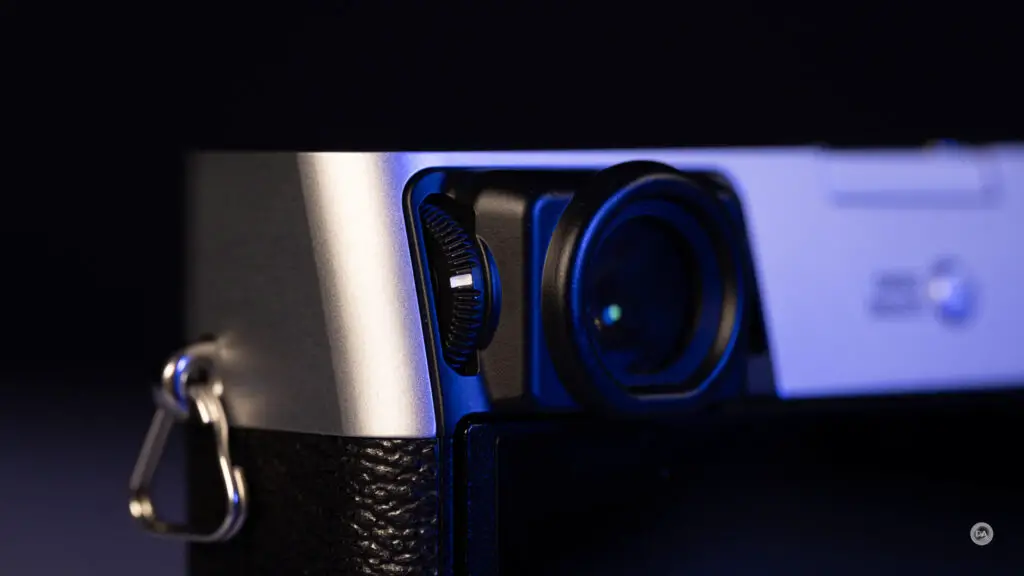
While I personally prefer a center viewfinder position, this is a nicer implementation than on, say, Sony’s cameras.
There are also a few controls on the lens itself. There are two protrusions close to the camera body that control aperture. The tight confines of that space might dictate that it is easier to control aperture from within the camera. You can set the aperture ring to “A” to enable camera control, though I had to fiddle around in the menus to get aperture control the way that I wanted. The settings didn’t quite function in the way I typically expect them to.

The aperture ring itself is clicked at one-third stop detents, and there is no declick option.
The manual focus ring of the lens also serves as a command ring when in autofocus modes. One option, for example, is to use it to utilize the “digital teleconverter” settings. The standard focal length is 35mm full frame equivalent, and the two digital teleconverter settings allow for a 50 and 70mm “zoom”, though what is really happening is just a digital cropping of the image. These crops will only show up in JPEGs, by the way, as I found that RAW images came into Lightroom uncropped even when I had used the digital teleconverter. Here’s how those crops affect the resolution.
- 35mm (23mm APSC) – 7728 x 5152 px – 40mp
- 50mm (35mm APSC) – 5472 x 3648 px – 20mp
- 70mm (50mm APSC) – 3888 x 2592 px – 10mp
Clearly this is a feature that only really works due to the higher resolution of the new sensor, as the crops from a 26MP sensor would end up being too low of resolution to work in a lot of applications. It would have been nice to get those RAW images with some of that crop information embedded in them, but that doesn’t seem to be the case.
The ring itself moves very nicely, with a good level of damping. I found that manual focus had a fairly analog feel to it.
There is no lens release button on the front of the camera for obvious reasons.

What is present, oddly enough, is a little flash. It’s just a rectangular grid in the front of the camera (nothing pops up), which they can get away with because Fuji’s engineers could design around a fixed lens and its dimensions (though adding on one of the converter lenses will surely interfere with the flash dispersion pattern). This is not a powerful flash (unsurprisingly), rated at 24.3′ / 7.4 m at ISO 1600! I’m not a fan on on-board flashes because of the look of images taken with an on-board flash.
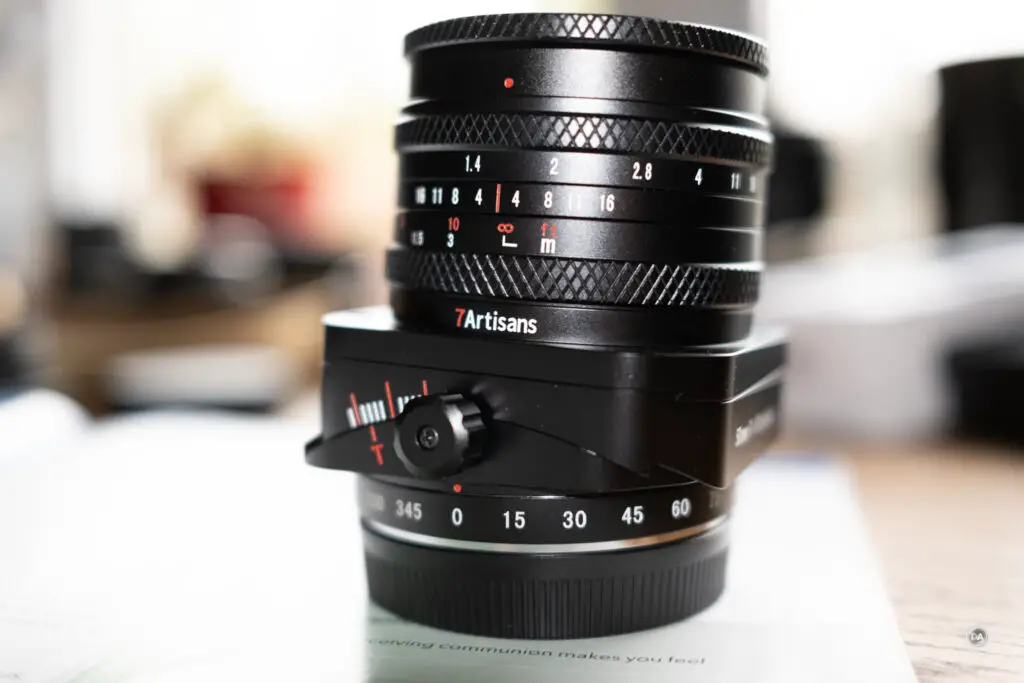
While playing with the flash settings in the Q menu, however, I did discover that the flash can be used as a commander for slave flash units, which could be useful.
On the left side of the camera is one of Fuji’s useful control points – an easy to use switch that controls the focus mode (Manual, Continuous, and Single Shot).

The top of the camera has a great looking retro aesthetic that also suffers from some retro ergonomic shortcomings.
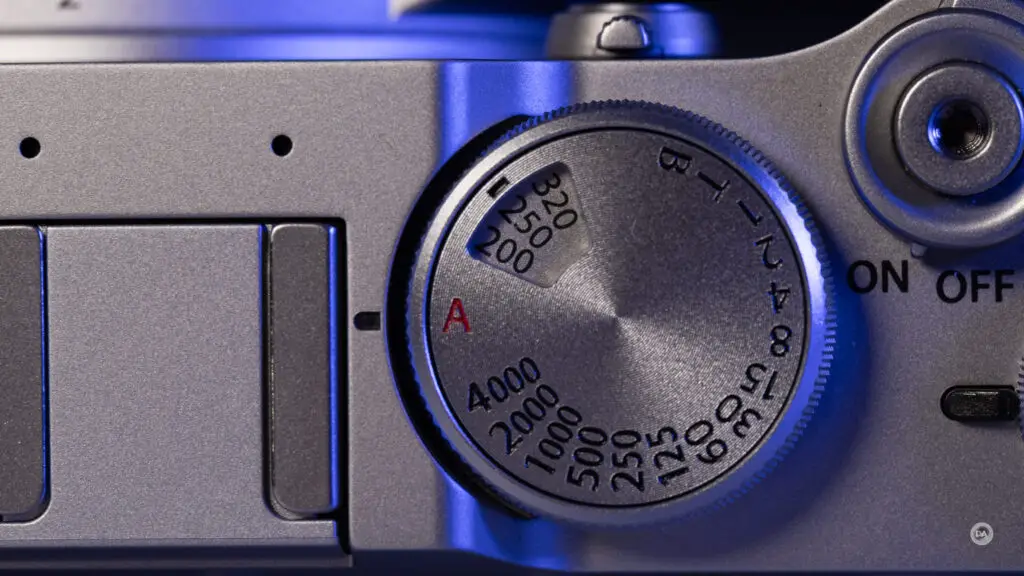
Fuji’s shutter speed dials have always struck me as rather strange. It is hard to imagine a scenario where a modern photographer would prefer the imprecision of being able to choose only full stops of exposure rather (that’s what’s controllable here) rather than the much greater precision of the one third stops available through the typical command dials. That’s a lot of potentially under or overexposed images! It’s ironic that the largest dial on the camera is arguably the most useless.
Also strange is the implementation of the very clunky ISO controls visible through the little cutout on this wheel. It took me a bit to figure out how to access them, but I eventually discovered that I could pop up dial and twist it to control the ISO settings rather than the shutter speed settings. You then have to pop the dial back down, as there are no defined clicks or detents for ISO settings and it would be very easy to bump the dial and change the settings.
Weird.
It was actually quite frustrating during that process, as Fuji doesn’t really have much in terms of secondary ways to change those settings. On Canon cameras one has the option of just touching ISO on the touchscreen and making a quick change. On Sony you can assign it to a wheel or change it in the Q (Function) menu. You can’t do either of those things here, as ISO isn’t even an option in the Q menu and Fuji’s screens continue to have very limited touch control (and poor responsiveness). The workaround involved putting the ISO control dial setting to C (Command) and then setting up one of the dials to control ISO.
That section of the camera’s controls I would gladly replace. A typical mode dial would be much more useful to me.

Other controls here are more conventional and better for it. The Exposure Compensation dial is very welcome. There is a small programable button to the right of the shutter. The shutter is threaded in a typical Fuji fashion, and surrounding it is the ON/OFF toggle. You can choose either a mechanical style shutter with a 1/4000th shutter speed limit, or an electronic shutter that can reach a much higher 1/18,000th shutter speed. Fuji has a nice hybrid option where you can choose to use the mechanical shutter for slower shutter speeds (with all of the advantages that come with a mechanical shutter) and then automatically switch to the electronic shutter when faster shutter speeds are needed.
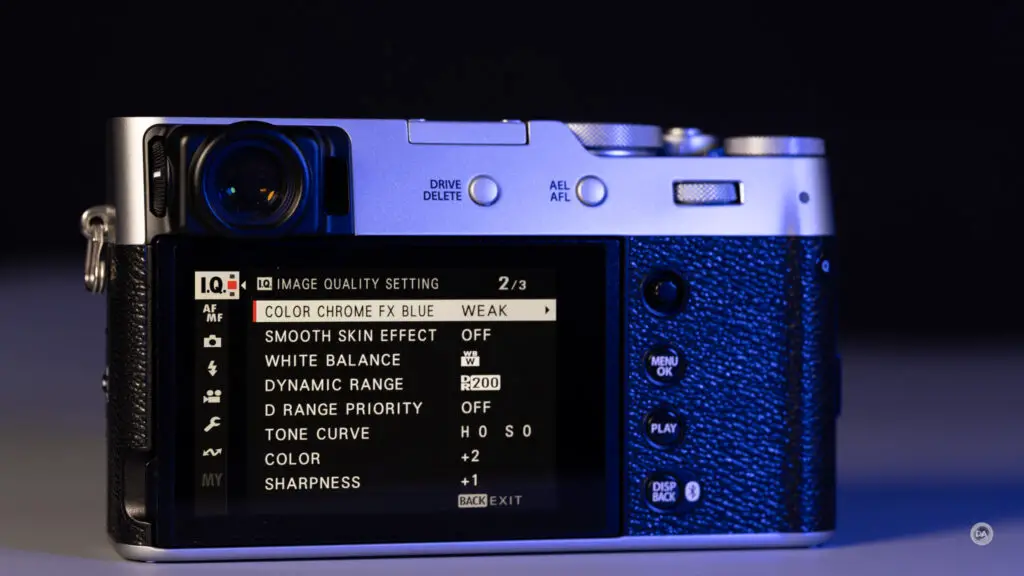
The back of the camera is a mix of normal and unexpected. The unexpected comes in the form of the drive button. It has the expected settings like the normal drive options (burst options, etc…), but really it functions more like a mode dial, including a wide variety of bracket options, HDR modes, panorama modes, and even access to movie mode.

It’s a different design than I’m accustomed to from Fuji. One interesting bracket mode I like is the ability to bracket film simulations. It seems to happen instantly, so only one shot feels like it is taken, but you’ve got three different film simulations recorded (for JPEG). You can obviously select which three film simulations you want bracketed. The RAW images arrive in Lightroom unchanged from each other, but JPEGs have the film simulations applied. In this case they are subtle because of the three simulations I chose, which include Provia, Astia, and Reala Ace (a new simulation I quite like).



It unfortunately does not appear that you can add customized presets to the bracketing options.
Other controls are more conventional, with a rear control wheel (which can be clicked for an additional function), a mini joystick, and a variety of buttons.
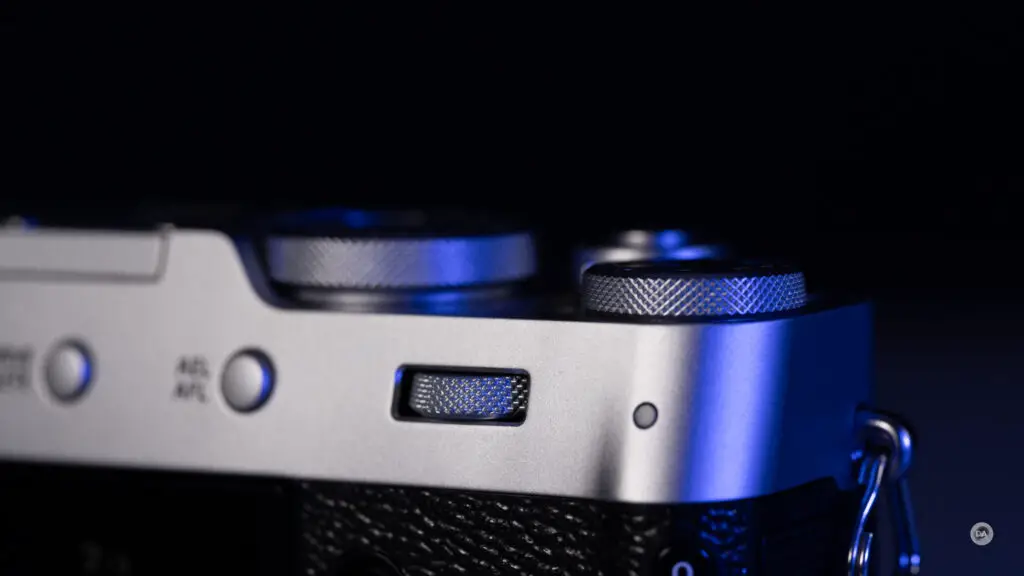
I’m less crazy about the position of the Q button, which is a very flush button right on the grip. It feels like there was a lot of room to place that button near the other buttons where it would be more easily accessible (and would allow for one hand operation).

Rounding out the back is a fairly large 3″ LCD with 1.62 million dots of resolution. It is a tilting (not articulating) screen that allows for a slightly bigger range of motion than before to allow for better tilting when shooting in a higher position. As noted earlier, there is some limited touch capacity, but little in terms of menu navigation (some touch in Q menu but not main menu) and lower reactiveness than competing models from other brands.

The right side of the camera holds the connection ports, including a combo mic input/remote shutter release port (3.5mm), a USB-C port for communications and charging, and a micro-HDMI port. I’m not a fan of micro-HDMI, but I understand that space is limited in a smaller camera like this so I’m more accepting of it.
The bottom of the camera shows the battery compartment, and there we find a few disappointing aspects of this design. The first is that the battery spec has not improved despite a more power hungry sensor and AF system. The NP-W126S is a relatively small 1260mAh unit that is rated for as much as 450 frames when using the OVF but drops to 310 frames in normal mode when using the EVF. That’s only about 45 minutes of 6.2K or 4K60 recording. You probably want to pick up a spare battery or two.



The second disappointment is that the memory card is housed there. I hate this position as it makes it far more likely that you’ll walk away without a memory card inserted because you have to close the battery door to set the camera down (happened to me!) If you have a tripod QR plate attached you also won’t be able to open the door to get at the card without removing it first. Even more surprising is the fact that the card slot is only UHS-1 compatible, which is really surprising to me when I consider that this is a camera with a 40MP sensor capable of shooting up to 20FPS and recording 6.2K video. That’s a lot of data that needs to pass through a fairly small pipeline (UHS-I is only capable of one third of the speed of UHS-II). I would have thought that at the least Fuji would have upgraded to the UHS-II standard to accommodate the larger data this camera needs to move.
As noted, this is the first of the X100 lineup to include IBIS. The miniaturized IBIS unit that Fuji has incorporated here is rated for up to 6 stops of stabilization. That’s a great addition to the formula here. In theory that should allow for handholding shutter speeds down to one second, though practically you will have limited success getting much of a keeper rate at one second. The greater value will be in the ability to get stable handheld video footage, and I did find IBIS effective for that. On the stills side, I was able to hit a roughly 25% keeper rate handholding shots at 0.5th of a second (five stops).

Accessories
Fujifilm is pretty specific that weather sealing for the camera requires using an adapter ring that adds filter threads and then using a filter to complete the seal.
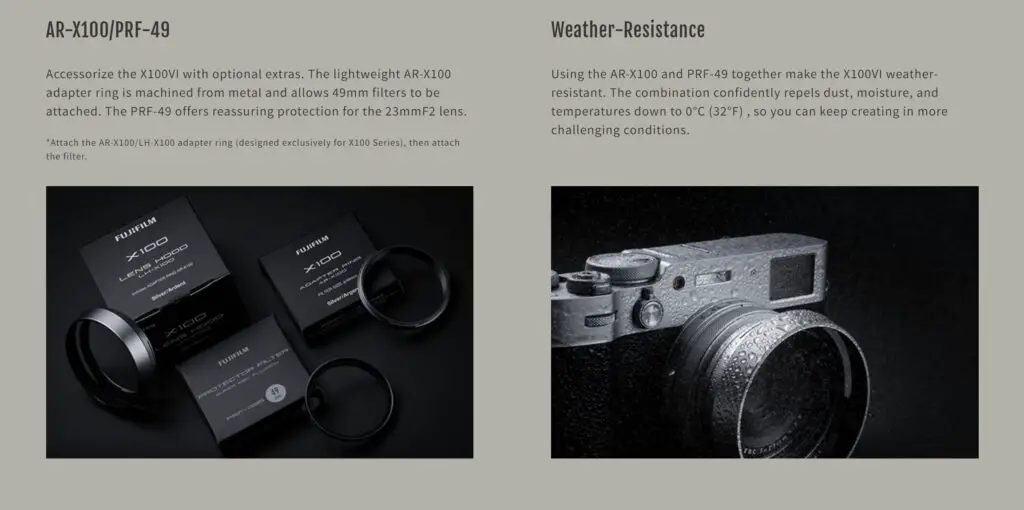
This first involves unscrewing the metal flange at the end of the lens and exposing outer threads that allow accessories to be threaded on. I have a few objections to this process, however. First of all, clearly adding this filter ring and the filter itself completes the sealing for the lens (that’s the only place where protection is being added), which begs the question, “Why not just have a weather sealed lens?” Fuji has many lenses that come with a WR (weather resistant) designation, and none of them require a filter to complete the process. I’m personally not a big fan of using protection filters for the simple reason that you are adding another glass element, which never improves on the optical formula. It can create more flare issues, a slight softening effect, and if a person doesn’t invest in a very good filter, a more serious degradation of image quality.
The process is also a little clunky, requiring one to bring additional accessories along to complete the process. You can keep it all installed, obviously, but that does add more thickness to a camera that you’ve purchased in part for a slim profile. There is the risk of losing the metal flange that otherwise completes the look of the system. And if you don’t keep it installed, what happens when the weather turns unexpectedly sour (as it often does in spring when I’m doing this review). Doesn’t just having a weather sealed lens make more sense?
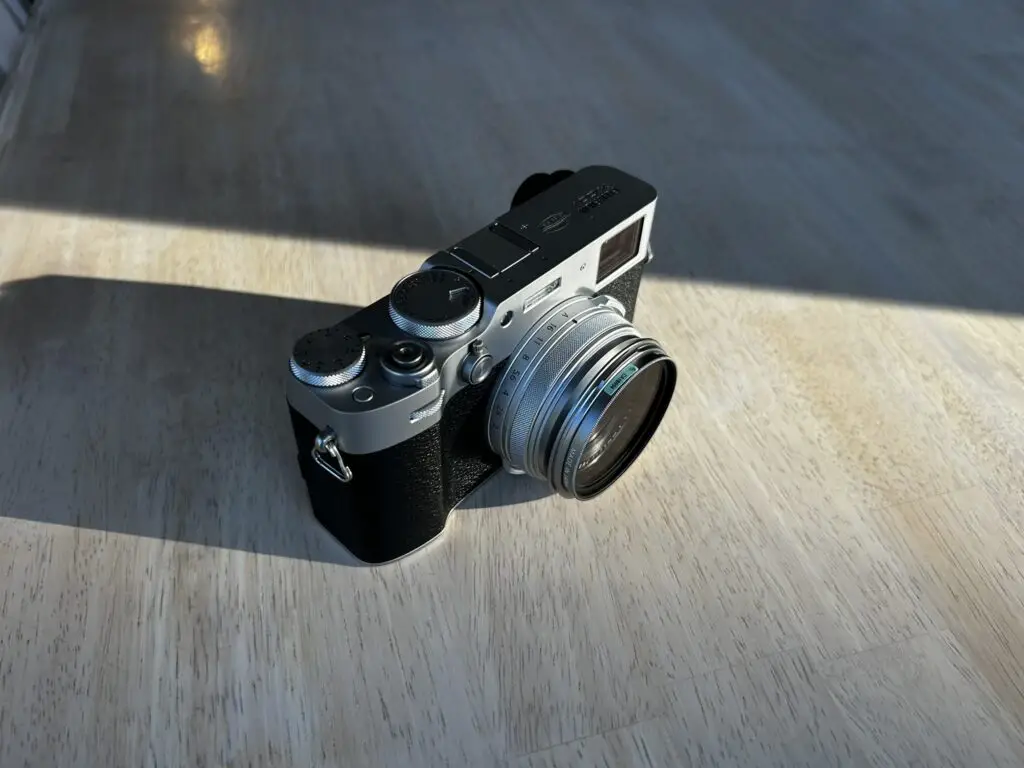
There’s also the reality of cost. The adapter ring and filter are not included. The AR-X100 adapter ring costs an additional $46, and their 49mm protection filter is an additional $49. Now, to be fair, you could use another brand of filter, but Fuji’s filter is available in the silver color that is the aesthetic match of the silver edition of the camera. I’m guessing that if you spent the money to get this stylish camera, you’re going to want a filter that matches. So that’s another $100 added to your bill if you want to have a weather sealed camera. Again, I have to ask: doesn’t just having a weather sealed lens make more sense?
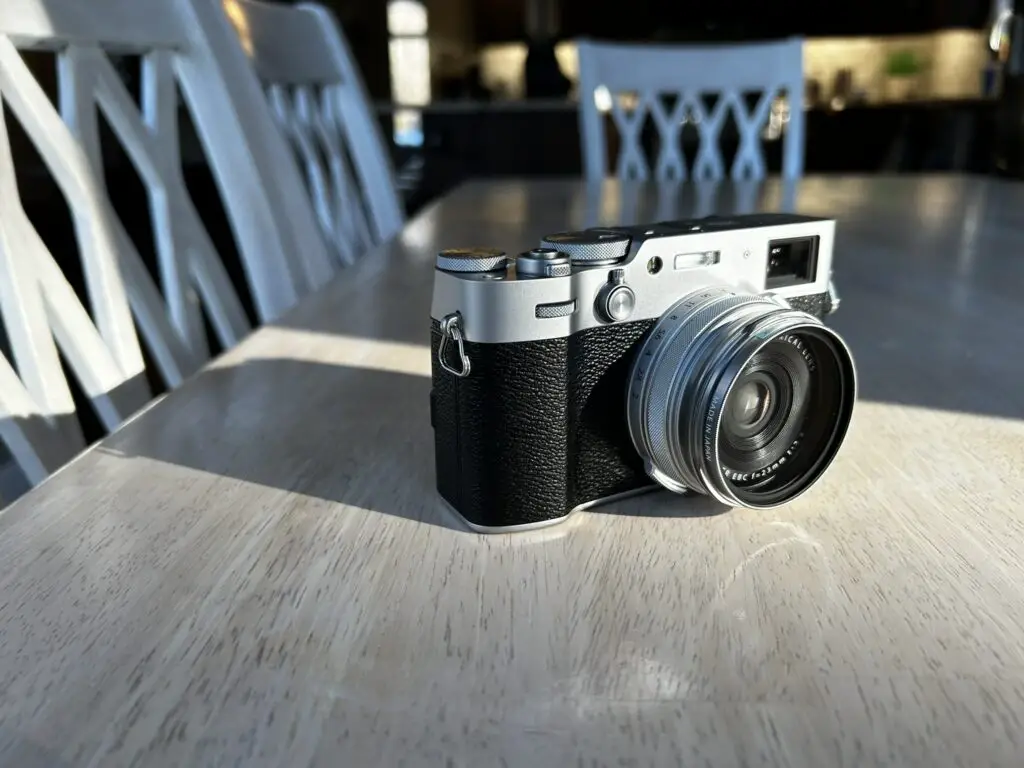
There’s one final complication to this arrangement, though it will only affect those interested in using the converter lenses to give either a wider (28mm equivalent) or normal (50mm equivalent) angle of view. Both of these converter lenses need to thread onto the same threads as the filter adapter, so once again you will have the somewhat clunky process of threading off one attachment and threading another on.
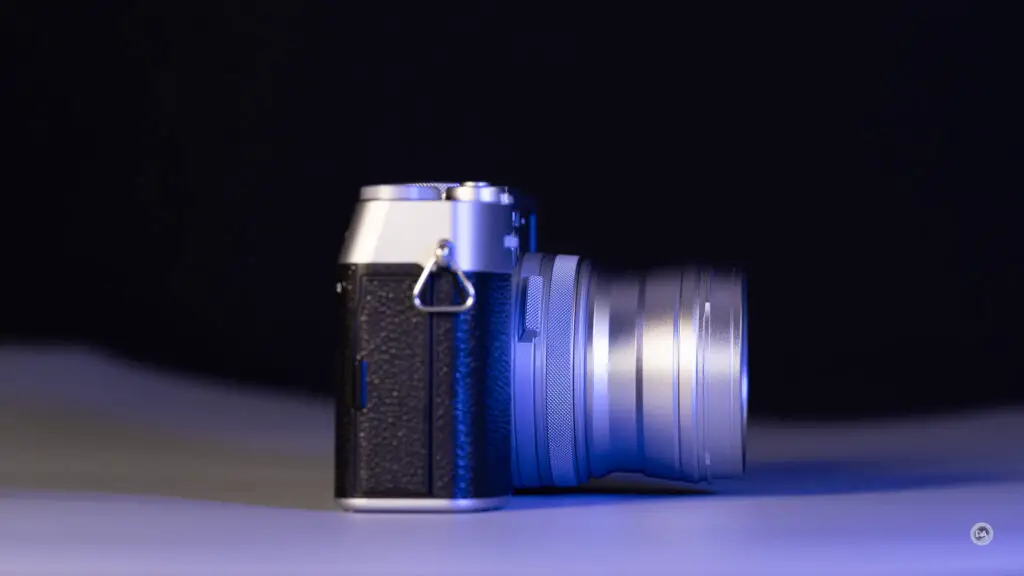

I appreciate the fact that these accessories to do add some versatility to the camera, though, frankly, if you are going to this trouble and expense, you might as well invest in an X-T5 (my review here) and have access to a wide variety of lenses. If you’ve already invested in these converter lenses in the past, however, they continue to be compatible to this most recent X100 body.

Another accessory that remains compatible with the X100VI is the LC-X100V leather case (lower half shown above to highlight the throwback ethos). The case costs $80 USD, and offers both retro style and a good amount of protection when full employed.
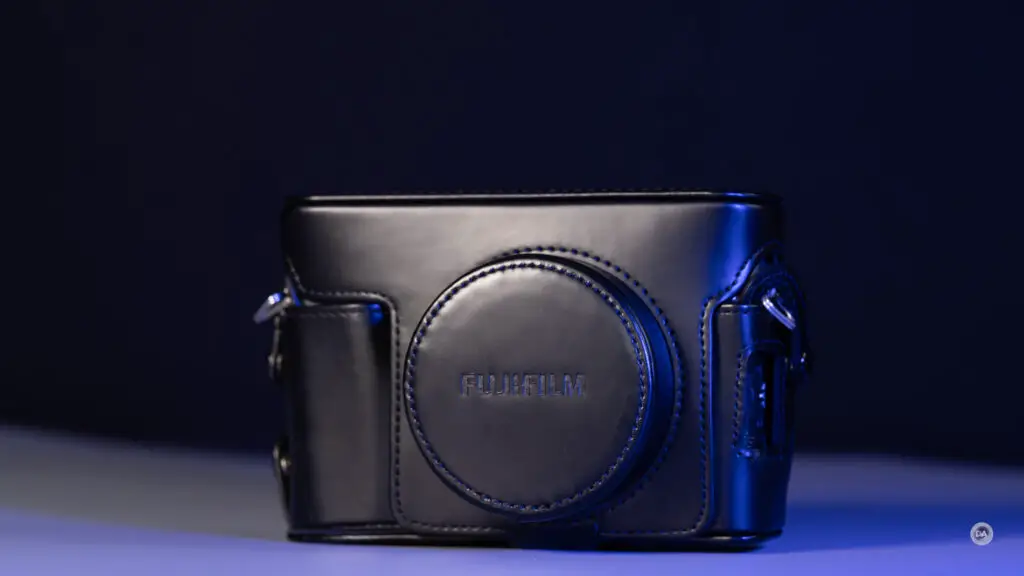
No to harp on the weather sealing issue, but here we run into the flaw in the design. If you have the filter adapter and filter attached (to weatherseal the camera), the camera doesn’t quite fit. You can force it and make it work, but it was clearly designed with the bare camera in mind. This is one of the top user complaints, though a close second is that the design is in two pieces (top and bottom halves), and the two pieces don’t connect. This means that when you go to shoot, you essentially have to remove the top half, leaving a rather large and clunky piece in your hand(??) while you shoot one handed.
And this sums up the paradox of the physical design of the Fujifilm X100VI. What makes it so cool is its retro design, but almost all the design and ergonomic flaws can also be traced back to the retro design elements as well. I get a sense from X100 aficionados that the quirks are all part of the charm for them.
Autofocus Performance
The X100VI receives Fuji’s most recent autofocus improvements, which are almost all software rather than hardware based. The underlying hybrid Contrast/Phase Detect autofocus system that has undergirded Fuji’s cameras for the past few generations is still in place (and in need of an upgrade!), but it has been augmented in the most recent generation of cameras with Fuji’s X-Processor 5. This adds AI based deep learning for subject detection AF to accurately track a range of subjects. The system detects animals, birds, cars, motorcycles, bicycles, airplanes, trains, insects, and drones (though you choose “bird” to track insects and “airplane” to track drones). My experience with Fuji’s most recent autofocus in a variety of cameras is that the AF system definitely works best when there is a trackable subject in frame.

There are definite improvements here, though it should also be noted that Fuji’s AF systems continue to feel more primitive than those on the other platforms I test.
What’s unique here is that the AF system is designed around use with one lens, so the lens performance is central to the autofocus performance as a whole. That leads to a bit of a mixed bag. Fuji does not specify the type of focus motor in the 23mm F2 fixed lens mounted here, but the fact that they don’t tells me that it isn’t their higher end linear motor. Focus speed is reasonably good (not brilliantly fast, but not slow, either), but the quality of focus isn’t impressive. The focus motor has a bit of a “scratchy” feel and isn’t as quiet as better lenses. Focus precision is good, however, and I had no problem nailing narrow depth of field photos.

Focus was fine for street photography, which is almost certainly going to be primary application for the X100VI.

I did feel like there was somewhat of a “double-clutch” action to focus lock, where focus did a few micro-pulses before final lock. I read a lot of people gush over autofocus, but that tends to be in comparison to previous iterations of the X100. If you are upgrading from another X100 model, I’m sure you will find autofocus improved. But if you are viewing the autofocus performance in comparison to what market competition is at the moment, it is acceptably good but far from top tier.

I’m not sure this is the camera I would reach for for tracking action. The burst speeds are fine, with up to 11 FPS with the mechanical shutter or up to 20 FPS with the electronic shutter, though with a 1.29x crop). If you don’t want the crop, the max burst rate is 13 FPS with the electronic shutter. The problem is with the buffer depth. UHS-1 SD cards just can’t keep up with much of that kind of data, so if you are shooting uncompressed RAW, you can expect a maximum of about 17 shots before the buffer fills. Switching to lossless compressed RAWs gets you up into the mid twenties, fully compressed RAWs the mid 30s, and JPEGs will range from 80-146 shots depending on your speed. Here’s a breakdown of all the options.
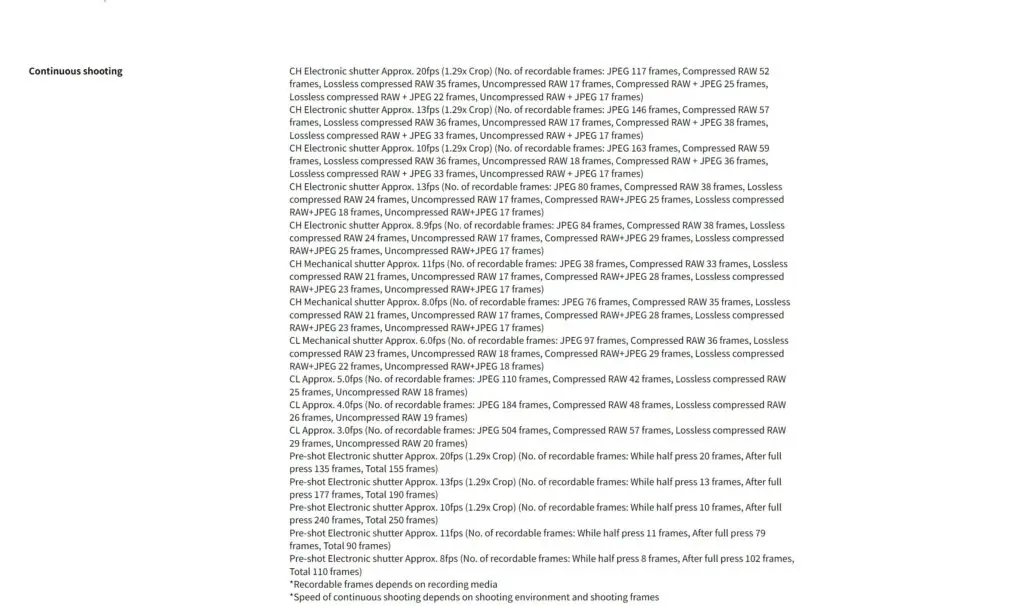
This is fine for shooting off a quick burst to capture the key moment for street or concert photography, but the duration before the buffer fills won’t be sufficient for most sports situations. This isn’t really that kind of camera, so buy accordingly.
Video focus is also a mixed bag. Focus pulls are relatively smooth, but focus confidence isn’t high. There’s a bit of settling before focus lock, and the initial focus point isn’t always accurate until it does a minor readjustment. There is some moderate focus breathing.
When I did my hand test (where I alternately block the view of my face with my hand and then remove it), I found that sometimes focus wasn’t quite reactive enough to make those transitions in a timely fashion.
Expect focus to be best when there is a trackable subject in frame. Focus stays fairly sticky on the eye as I moved the camera around, and I didn’t see pulsing in static shots where focus needs to lock and stay still.
In general my autofocus experience was fairly standard for a Fuji review. It got the job done, but without as much sophistication as I often see on Canon or Sony. It was enough to capture the key moments in a wedding, like the groom giving a fist bump coming down the aisle.

Video Performance
Video is one of the key areas of improvement for the X100VI over the X100V. Video capture is now available up 6.2K internally at 30p in 4:2:2 10-bit color. 4K can be shot at 4K60 (allowing for smooth slowed footage). True slow motion can be achieved at up to 240FPS at full HD (1080P).
Here’s a list of all the various video modes available:

You will encounter various crop factors depending on your choice. 6.2K footage will have a 1.23x crop, while 4K60 will have a mild 1.14x crop. 4K30 will have the full sensor width.
Both FLog 2 and HLG recording are available, and of course all of Fuji’s film simulations and your custom tweaks can be made. I found that the IBIS system worked well for static shots, slow movements, but wasn’t enough to compensate for the choppy footage that comes from walking while filming. If you want that silky smooth moving footage, put the camera on a gimbal.
Footage generally looks good. I typically quite like the footage from Fuji cameras, and while the video options here aren’t as robust as my own personal X-H2 camera, the X100VI is now largely on par with the video options on the X-T5.
Image Quality
The X100 series has been upgraded to the “…high-resolution 40.2MP X-Trans CMOS 5 HR sensor has an enhanced image-processing algorithm that boosts resolution without compromising the signal-to-noise ratio“, delivering astonishing image quality.” (Fuji’s language as quoted in my X-T5 review). I’m very familiar with this sensor as it is the same sensor found in my X-H2. My general feelings on this sensor are positive, though I’ve found that it is absolute murder on lenses that are less than perfect. Fortunately Fuji doesn’t have to worry about multiple lenses standing up to this sensor…just one.
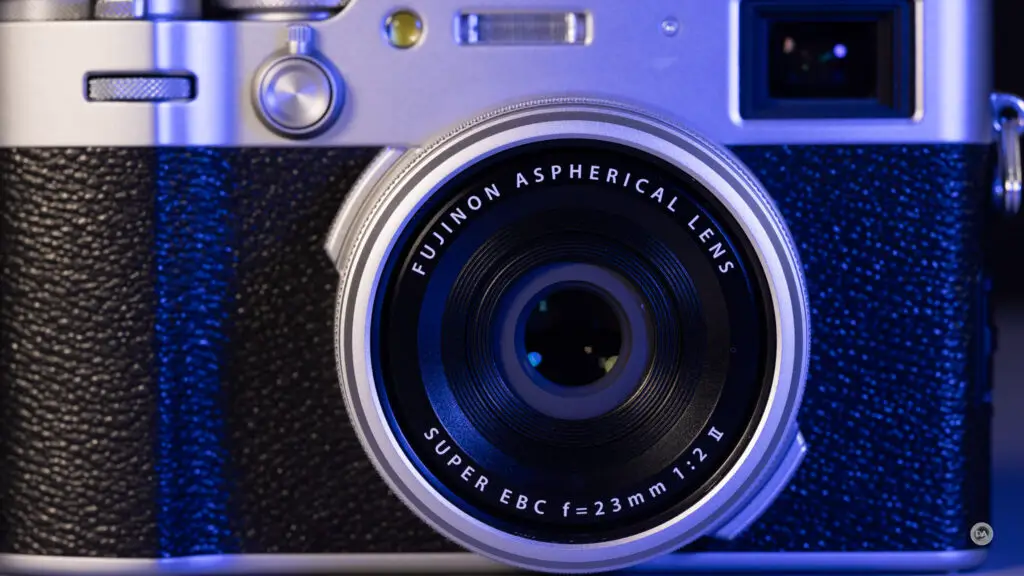
Fuji clearly felt that the existing 23mm F2 II lens was up to the task, and it largely is. This lens has an optical design of 8 elements in 6 groups, including two aspherical lenses. The sensor and lens are capable of producing detailed images.


I’ll give a brief breakdown of the lens performance as well as giving you the basic sensor performance (courtesy of my X-T5 review). There’s nothing new here in terms of the sensor itself; what’s new is its inclusion in this lineup of cameras.
Lens Performance
Fuji’s correction profiles are typically top notch, and that’s obviously going to be extra true of a camera where only one lens will be deployed. With corrections turned on, my text chart for Vignette and Distortion looks solid:
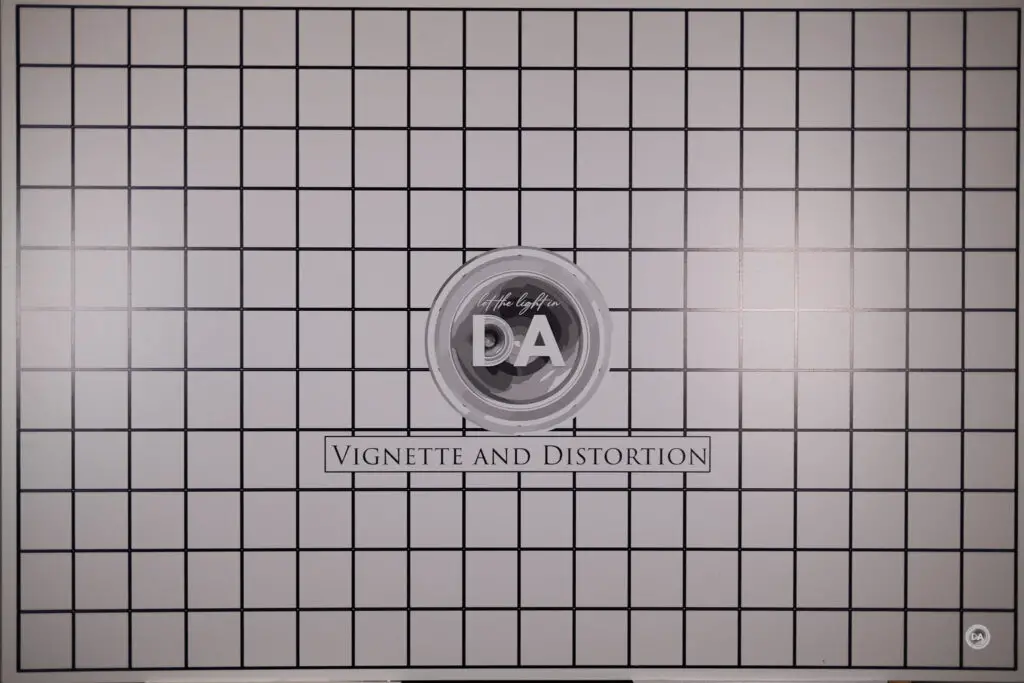
Pull back the electronic curtain and you’ll find a mild amount of pincushion distortion (-3) and a moderate amount of vignette (+57 to correct).

If you leave corrections on, you won’t see it. This is about an average performance.
I did see a bit of fringing around some window frames in a few of my video clips, but I would say in general longitudinal chromatic aberrations are pretty well controlled. You can see a bit of fringing on the edges of the various cameras here, but nothing that breaks the image.

I saw minor amounts of lateral chromatic aberrations near the edge of the frame, but those will be taken care of via corrections.
The big test here is whether or not this lens can handle the rigors of such a high resolution sensor. The new 40.2MP sensor is a whopping 53% higher in pixel count than the 26.16MP sensor on the previous generation X100V.
The 23mm F2 lens mounted on the X100VI isn’t a top tier lens, but it does quite well. I examine my test chart results at 200%, and I found that contrast was good in the center, with a dip to the midframe and more to the corners (pretty traditional sharpness profile). The ability to render fine details isn’t top tier, but not bad, either. Here’s my test chart that the crops will come from.
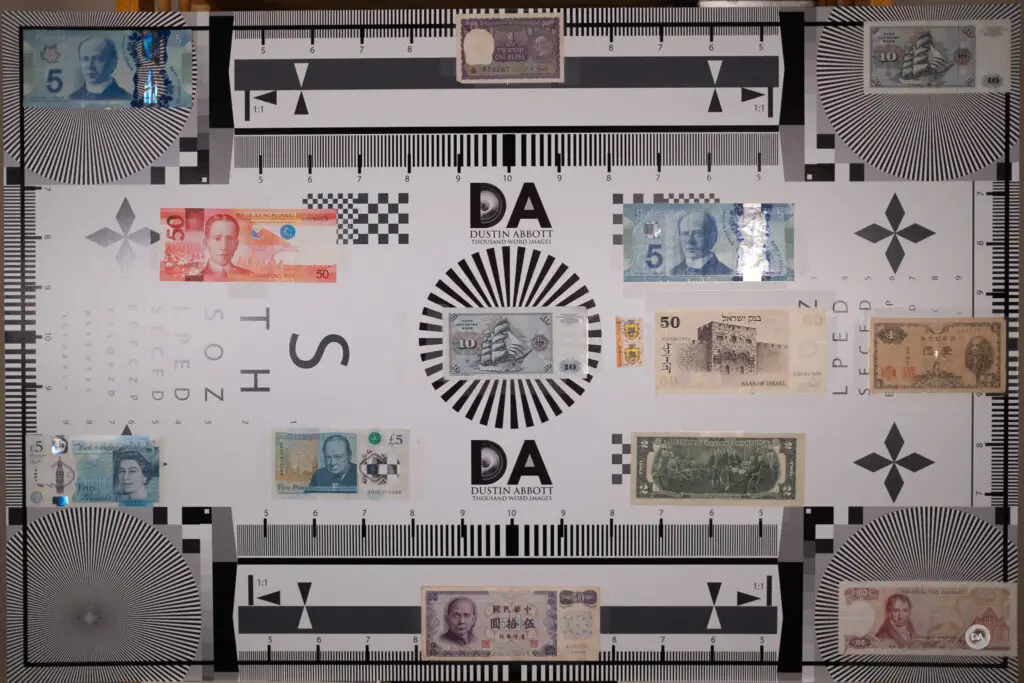
And here are F2 crops from across the frame:



This is a lens that really benefits from some stopping down. Contrast and detail is immensely boosted by stopping down from F2 to F2.8:
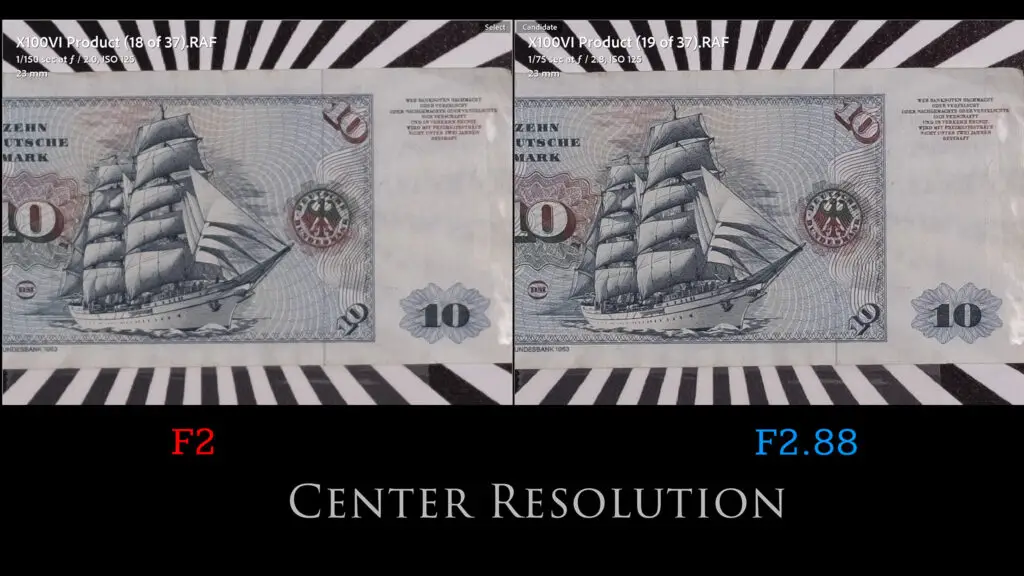
You can really see it in this real world shot (100% crop). The F2 frame looks a little low contrast, but the F3.6 shot really pops with contrast and detail:
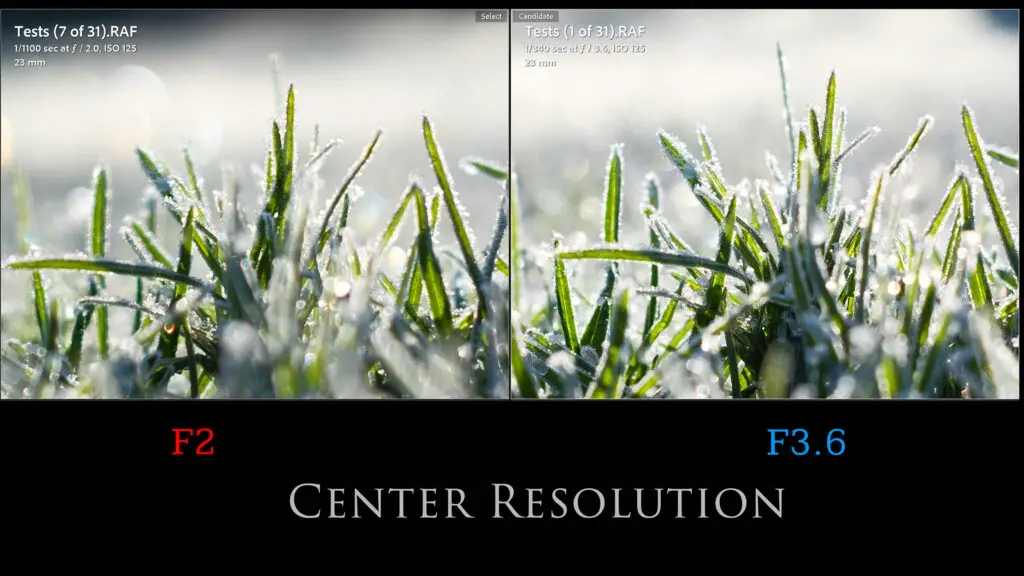
In less demanding settings, however, I found that I was happy with the detail I saw at F2 even if contrast wasn’t off the charts.

On this high resolution sensor sharpness peaks at F5.6, though corners never really get really sharp. There’s a pretty marked difference between contrast/detail in the center vs the corners.

Starting at F8 there will be some mild regression due to the effects of diffraction (which arrives very early on such a high resolution APS-C sensor). That softening effect will magnify at F11 and be very obvious by F16 (minimum aperture).
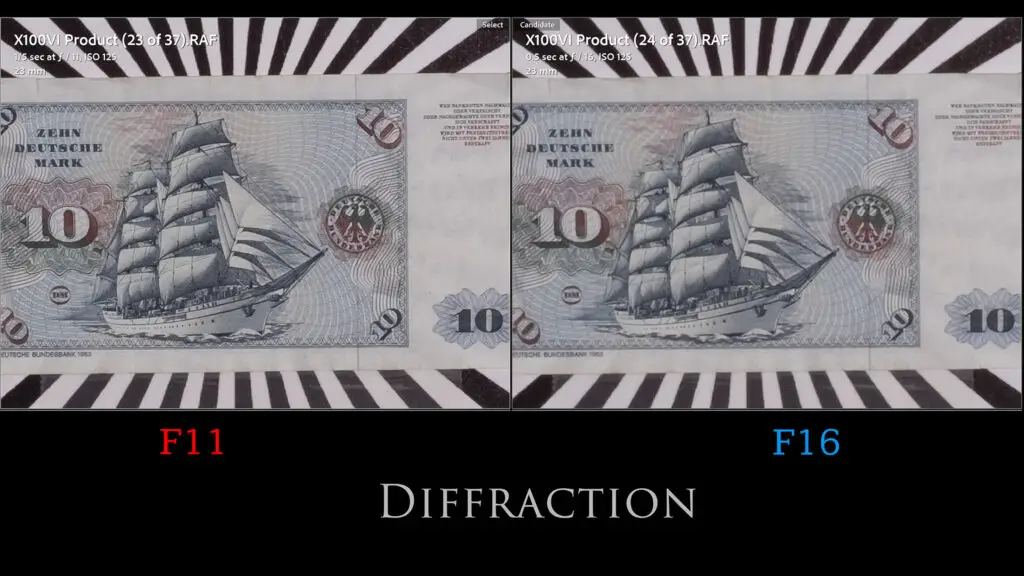
Bokeh is okay…not great. Get up close and you can blur out backgrounds fairly well.

Back up just a little and the background can get a little busier.

The lens handles up close shots with a bit of sun coming into the frame pretty well, delivering fairly artful images.



If you want optical perfection, however, you probably are going to be looking elsewhere. This isn’t a $2000 lens, but rather a good enough lens that allows the camera to do its thing and help you create images you’ll love.
Converter Lenses
There are two options – a wide converter (WCL-X100II) and a telephoto converter lens (TCL-X100II) – both retailing for about $350 USD. We’ll start by taking a quick look at how they impact framing. The wide converter lens changes the effective focal length to 19mm, or roughly 28mm full frame equivalence:
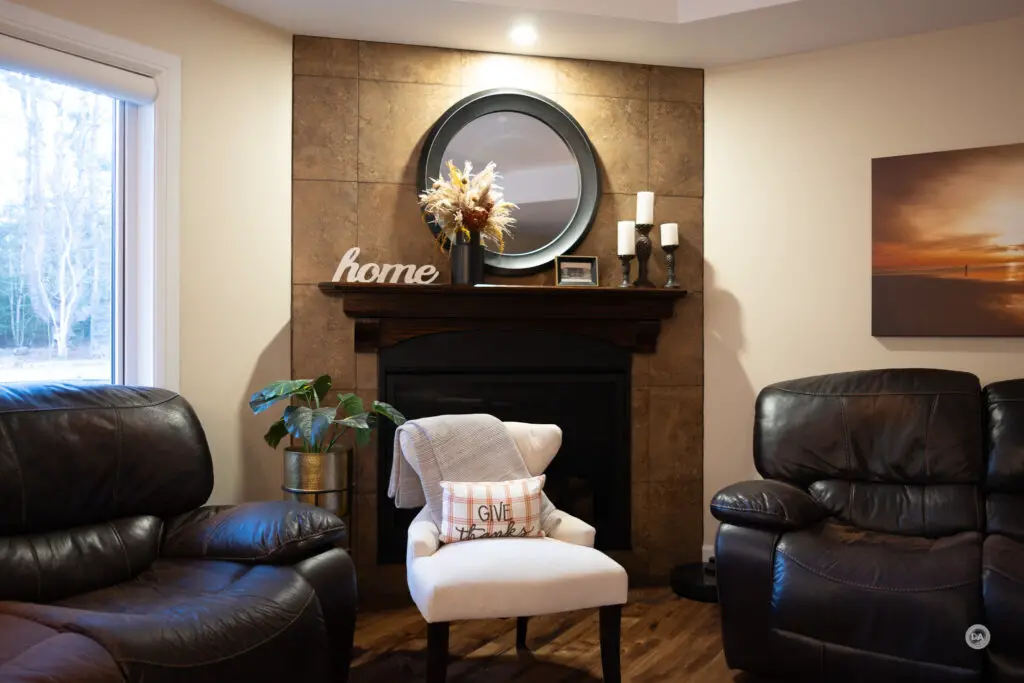
Here’s the normal 23mm (35mm equivalent) framing from a tripod of the same scene.

And finally here is the 33mm (50mm equivalent) framing by adding the tele converter lens.

By utilizing the digital teleconverter you can get a variety of other framing options at varying resolutions.
WCL-X100II crop mode resolutions:
- 28mm (18mm APSC) – 7728 x 5152 px – 40mp
- 41mm (27mm APSC) – 5472 x 3648 px – 20mp
- 58mm (38mm APSC) – 3888 x 2592 px – 10mp
TCL-X100II crop mode resolutions:
- 50mm (35mm APSC) – 7728 x 5152 px – 40mp
- 72mm (48mm APSC) – 5472 x 3648 px – 20mp
- 100mm (66mm APSC) – 3888 x 2592 px – 10mp
Using either converter lens does come with some optical costs. Using the wide angle converter (19mm) results in some significant barrel distortion (+17) and much heavier vignette (+92 – nearly maxed out) to recover it.

The telephoto converter increases the pincushion distortion (-13) and has nearly as big of an impact on vignette (+90 to correct).

What’s more, there is a serious impact to contrast by adding the lens converters. Here’s a comparison of the bare lens vs with the wide converter attached at F2:
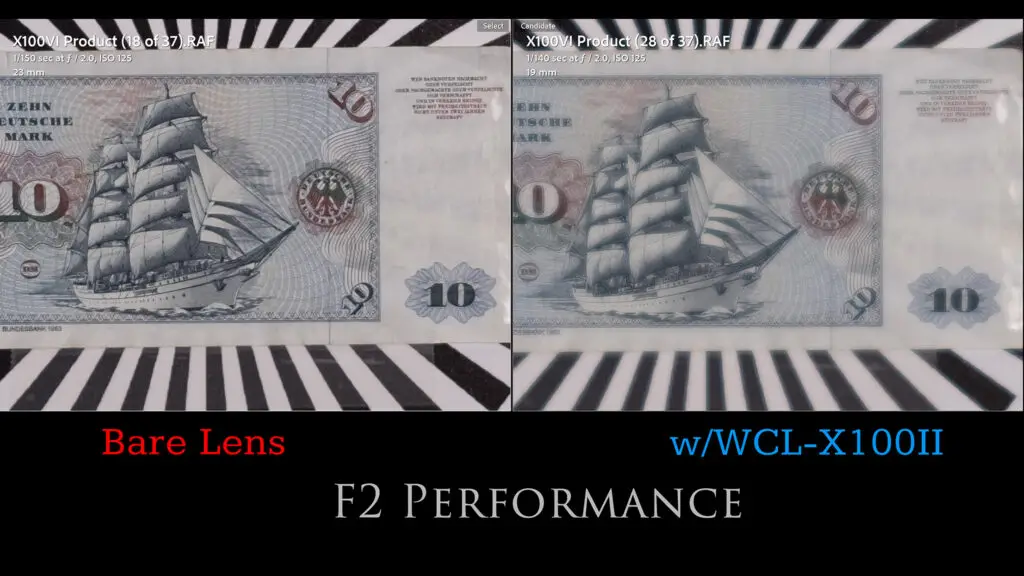
That’s true when stopped down, too. Here’s a mid-frame comparison at F4:

The impact isn’t as pronounced with the TCL-X100II, though the image is a bit softer.

Surprisingly, though, that’s not true when stopped down. At F4 I actually preferred the results with the TCL-X100II attached:

The TCL definitely beats the WCL for sharpness! Using these converter lenses definitely adds to your framing options here, but if you want a variety of framing options, wouldn’t you be better just buying a camera that would allow you to use different lenses? But if you just love the X100 concept, by all means, go crazy and accessorize!
Film Simulations and Color Science
Fuji has long been famous for their excellent film simulations. The most interesting thing here is the ability to really tweak each of these presets (or create your own recipes) and deliver very cool looking images right in camera. Fuji is pretty much a JPEG shooter’s dream, as you can tweak your recipes to get images you love right out of camera. RAW images with film simulations will arrive (as usual) flat in Lightroom, as you can easily apply any of 20 film simulations in post.
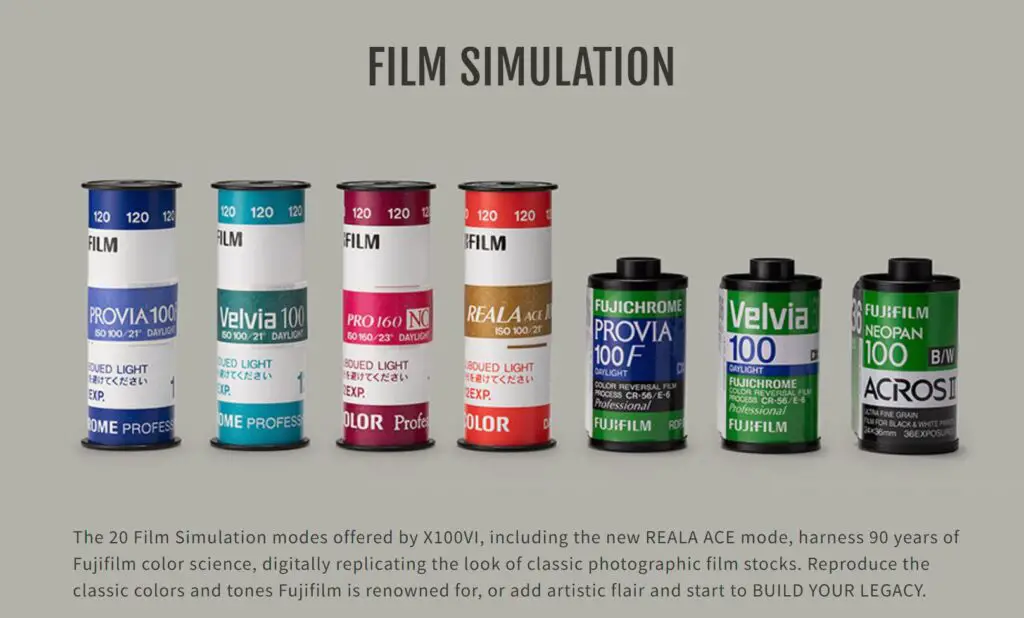
But the X100VI is unique in my experience in that if you create custom looks in camera, those will actually arrive intact in Lightroom even in RAW form, ensuring that you don’t lose the look you have created.

I absolutely love Fuji’s ACROS monochrome variations. They deliver sparkling B&W images.
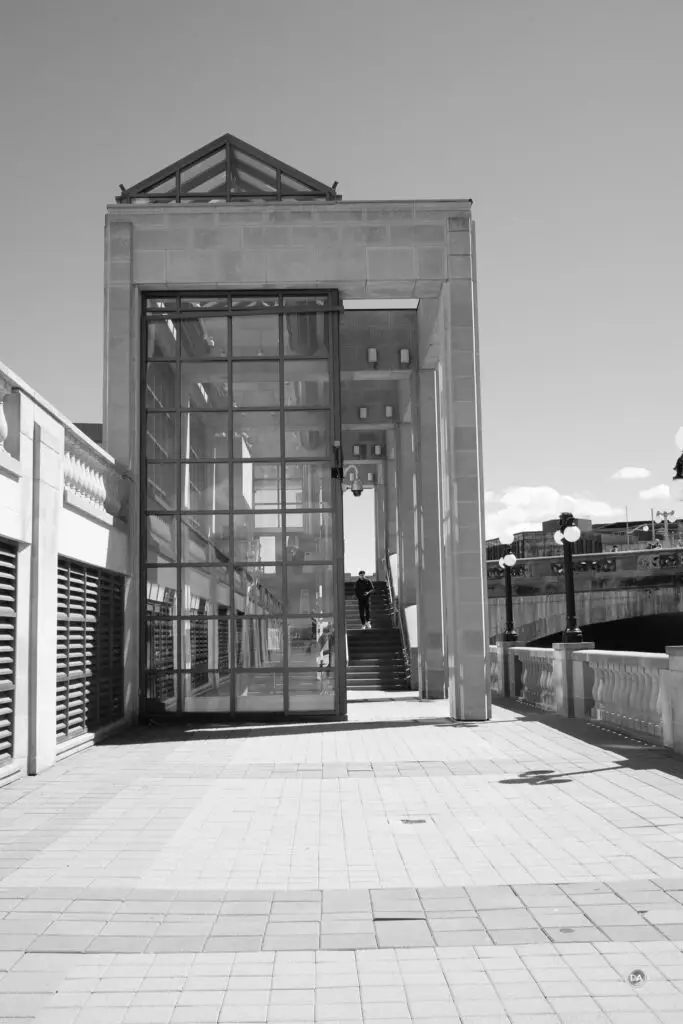


Give me a nice moody scene and I’m in heaven.

I’m also very partial to one of the new simulations called “REALA ACE”. It has a really nice look that feels very usable and flexible for a variety of images.

Fuji’s color science remains a treat, and, used well, this is a camera that do very special things.
Dynamic Range
I value dynamic range within a camera in two specific areas: the ability to cleanly lift shadows without introducing noise or color banding and the ability to recover highlights without introducing “hot spots” where information has been permanently lost.
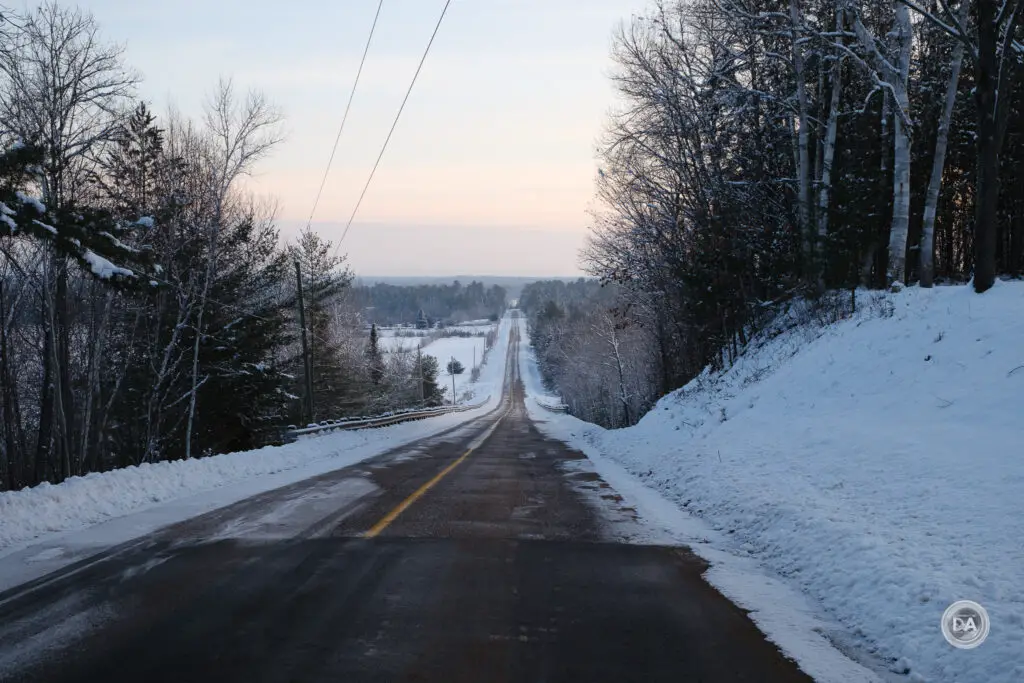
Having good dynamic range (particularly if you shoot RAW), allows you a lot more creative vision over how the final image will turn out, though it is always worth mentioning that just because you can raise shadows or reduce highlights it doesn’t always mean you should. Sometimes a photo with crushed shadows or blown out highlights is the better one.
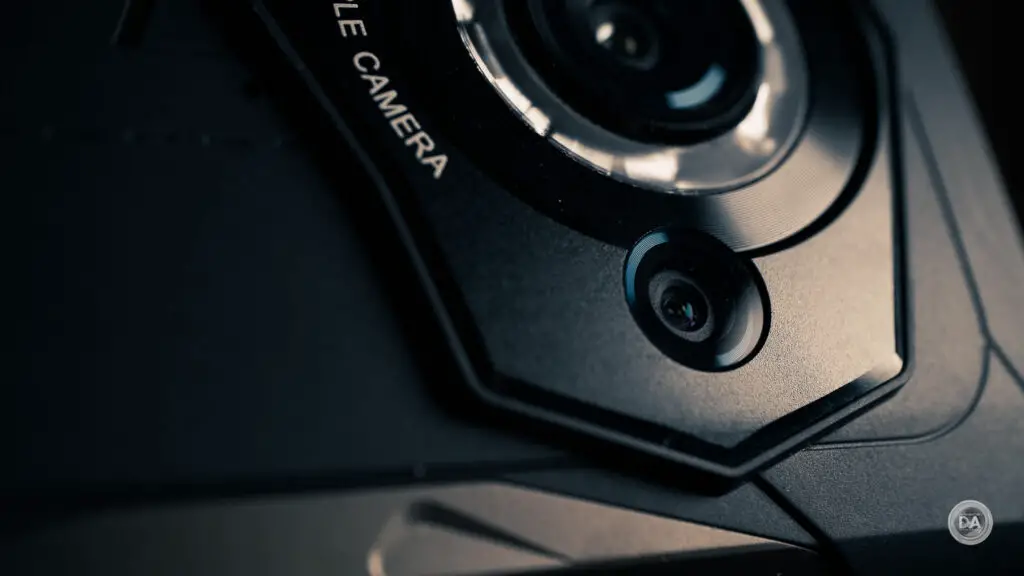
Fuji has an extra trick up its sleeve to help you maximize dynamic range performance in such scenes, which we’ll get to in just a moment.
In my tests, I found that this sensor did an excellent job of recovering shadows very cleanly. Here we have an image that I purposefully underexposed by four stops. As you can see in the original RAW image, there is very little information left there. In post I added those four stops back into the recovered image. What we find is an image that has been recovered with very little penalty, whether viewed globally:
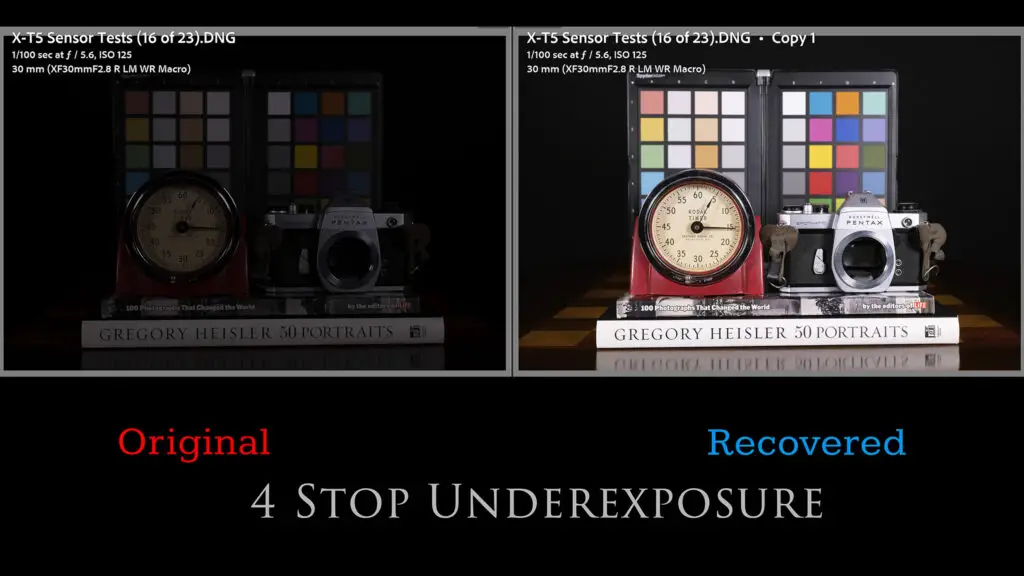
…or at a pixel level:
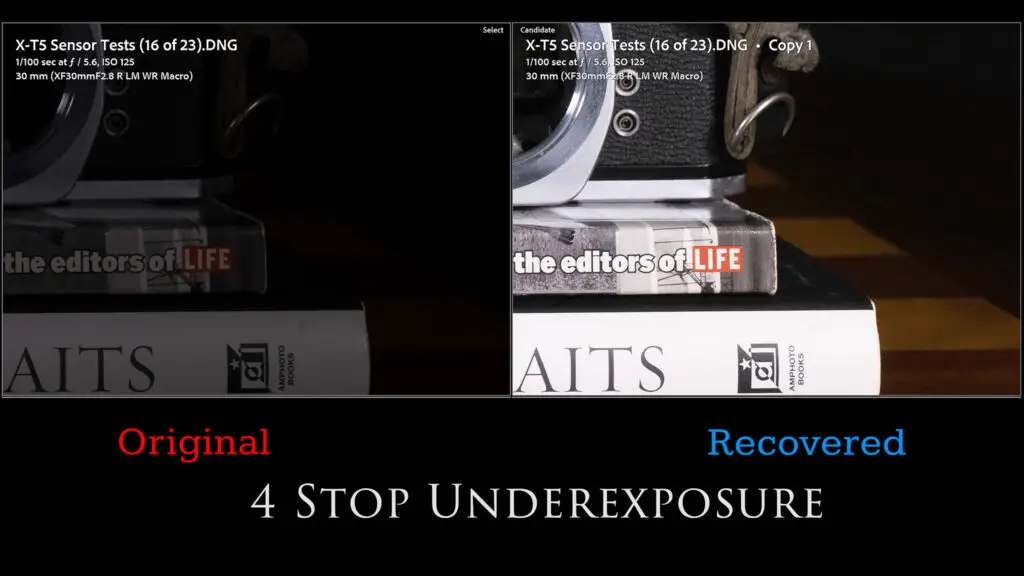
I could even recover shadows fairly cleanly at five stops, though you can see some additional noise has been introduced in the checkerboard pattern of the tabletop.

As is often the case, however, highlight recovery lags behind shadow recovery. Even at 3 stops of recovered highlights there is damage done to the image with both “hotspots” (information that cannot be recovered) and the loss of some colors in our swatches.

Sony is about a half-stop better in this regard, but Fuji has one other trick that I previously mentioned. If you move beyond the base ISO to either ISO 250 or 500 (and beyond), two new options open up in the menu. These are DR200 (available at ISO 250) and DR400 (available at ISO 400). What these do is essentially split the sensor readout so that the shadow information is gathered from the current ISO setting while the highlight information comes from base ISO. At ISO 250 that gives you one additional stop in the highlights (DR200), while at ISO 500 you gain two (DR400). This allows you to overexpose the image slightly so that you have plenty of information in the shadows, but since there is one or two stops less exposure in the highlights, you have plenty of ability to recover blown out areas in post. I also find that you retain better contrast even if you underexpose and recover using this method (here’s the DR400 recovered result at three stops of overexposure compared to the base ISO three-stop recovery):

Note how much more detailed and bright the right (DR400) recovery result looks. The shadow information looks the same on the two images (ISO 500 isn’t high enough to really introduce any additional noise), but the highlights are brighter and have much great fidelity. You’ll also note how much richer the colors are in the swatches by comparison. The better retention of highlights has vastly improved the overall contrast. I would pick the image on the right every time. It looks like a natural photograph despite the fairly radical recovery of highlights.
This is a technique well worth utilizing where needed, though I found that for the most part I did have enough dynamic range to edit as desired even at the base ISO.
Take this shot of a bridge. There is a bright sky and then deep shadow under the bridge. I have plenty of latitude for recovering the shadows over the bridge and even darkening the sky (not that there is a lot there!).
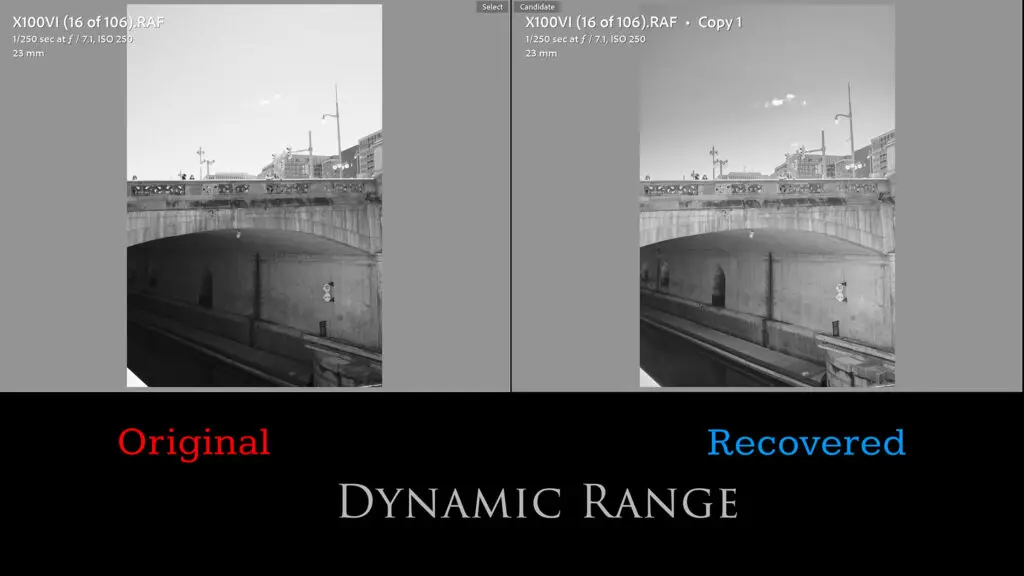
That’s a very useful amount of dynamic range, and if you need more, just use the DR200 or DR400 modes. It’s worth noting that due to the increased sensitivity in the ISO (base ISO of 125 vs 160) both of those are available earlier than they were previously, meaning that you can keep the noise down even more than on previous Fuji bodies.
On the video front we find that the X-T5 has Fuji’s F-LOG2 which boasts over 13 stops of dynamic range, meaning that you have more video dynamic range available than on previous models that only had the original F-LOG profile.
ISO Performance
Fuji tends to be a little more conservative with their native ISO range than other companies and resort to less marketing hype, though I frankly find the ISO performance to be ever bit as good as the best from Canon and Sony (the other brands I test). In this case the native range is expanded slightly, but on the bottom end, as the base ISO is now 125 rather than 160. The native limit is still 12,800, though expanded options at 25,600 and 51,200 are available. I didn’t really feel like there was much of a step back relative to the 26MP sensor despite the increased resolution, with images at ISO 6400 looking usable in real world situations.

At ISO 800 there is a mild addition of noise only detectable in the shadows. There isn’t a lot of difference from base ISO, however, and moving on to ISO 1600 shows little difference. At ISO 3200 there is slightly less contrast and slightly more noise, and that pattern continues at ISO 6400 and 12,800, where the noise becomes rougher and more visible in shadow areas. The first stop in the expanded range (25,600) looks about the same as what you would find on a Sony or Canon camera (where it is included in the native ISO range), with more visible noise and black levels that aren’t as deep due to “hot” pixels. ISO 51,200 should be be avoided, as image quality is several stops worse even though that is only one stop more. There’s a fair difference between ISO 3200 and 12,800:

Fuji says that the X-Trans sensor produces a more film-grain-like noise pattern, but it mostly looks like the pattern noise I see with most cameras.
What is a strength, however, is color fidelity. I never really see a shift to greens or magenta as the ISO raises, nor do I see obvious banding in the shadow areas. Overall I’m impressed with the performance.
This real world image at ISO 12,800 looks perfectly useful to me.

Switch it to a monochrome where a bit of grain is desirable (Acros +R here) and you’ve got a great looking shot.

Resolution
The new 40.2MP sensor is a whopping 53% higher in pixel count than the 26.16MP sensor on the last few X100 bodies. That additional resolution has a lot of potential value, particularly when, as we’ve seen above, it doesn’t come with a lot of extra baggage in terms of reduced ISO performance. For portrait photographers, that high resolution means that you can take one portrait and get multiple different crops out of just one image.



The ability to deeply crop for street shots is very useful, as the original shot here seems to focus on the architecture:

While the cropped shot allows the walker to show up more prominently in the scene.
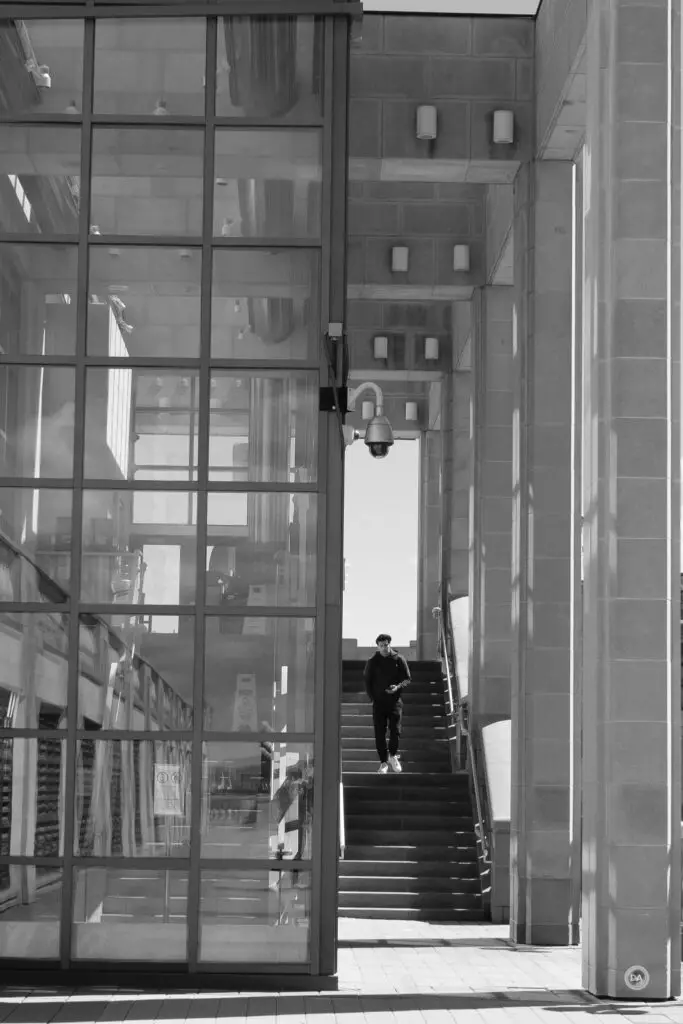
I’m having a hard time finding a downside to the resolution here, particularly when there is a Lossless Compressed RAW file option that keeps the file size down to a reasonable 40MB(ish) size, JPEGs are around 18MB, and if you want even smaller file sizes, you now can choose the HEIF image format which delivers 10-bit image quality in files up to 30% smaller than standard JPEGs. The fact that Fuji has managed to control keep ISO performance fairly similar to the 26MP level of the X100V helps eliminate a lot of the downside of the higher resolution. That resolution is going to be super helpful on a camera with a fixed lens.
Image Quality Summary
As I said in my intro, the allure of the X100VI is in its packaging and overall aesthetic. The focus system and sensor are essentially identical to what you’ll find in an X-T5. Fuji’s 40MP sensor is top dog in terms of raw resolution, their color science is excellent, but the true magic lies in the endless customization of their film simulations and the looks you can create in camera. Done right and you can create images that look almost as cool as the camera.
The actual lens is no better than average, but it gets the job done and doesn’t get in the way.

Conclusion
Almost certainly you will read more effusive reviews of the Fujifilm X100VI than this one, as I have tried to separate the hardware realities from the hipster “gotta-have-it” cool factor of the camera package. Having spent some time with the X100VI, I can understand the attraction, and I’m personally all in favor of anything that drives attention to the shrinking camera market.

The true magic of the X100VI is in the packaging. It is more than the sum of its parts, as when I break down the hardware, autofocus, and optical performance, there is nothing really exceptional here. But yet there’s also an undeniable pleasurable feeling of carrying this little camera around making magic with it.

Who knows how long it will be until the Fujifilm X100VI is readily available, but there’s no question that Fuji has managed to get the photography world’s attention with this upgraded premium compact camera. I hope you manage to get one…and hopefully you will feel the “indulgent” vibe that Fuji wants you to feel.
Pros:
- Top of the heap for desirability
- Very cool aesthetic
- Serious improvements to the series in the X100VI
- 40MP sensor upgrade allows for more framing/cropping versatility
- Inclusion of IBIS is fantastic
- New film simulations are useful
- AI Tracking upgrade
- Huge video spec upgrade
- Remains compatible with accessories from previous generation
- Much cheaper than buying a Leica rangefinder!
Cons:
- Retro controls lead to sometime clunky ergonomics
- Not much of a grip
- UHS-1 limitation slows data transfer
- Autofocus experience only so-so
- Weather sealing process seems wholly unnecessary
_________________________________________________________________________
GEAR USED:
Purchase the Fujifilm X100VI @ B&H Photo https://bhpho.to/3VYCWWe | Adorama https://howl.me/cl2uPHzpB71 | Nuzira https://tinyurl.com/BuyX100VI | Amazon https://amzn.to/49yrTWF | Amazon Canada https://amzn.to/3Q2QNXt | Amazon UK https://amzn.to/4cYJfPE | Amazon Germany https://amzn.to/3xy8UhI
___________________________________________________________________
Purchase the Fujifilm X-H2 @ B&H Photo | Adorama | Nuzira | Amazon | Camera Canada | Amazon Canada | Amazon UK | Amazon Germany
_________________________________________________________________
Want to support this channel? Use these affiliate links to shop at: B&H Photo | Amazon | Adorama | Camera Canada | Amazon Canada | Amazon UK | Ebay | Make a donation via Paypal
Buy DA Merchandise https://bit.ly/TWIMerch
Keywords: Fujifilm, X100VI, X100, VI, Fuji X100VI Review, Fujinon, Dustin Abbott, Review, Sensor, Tracking, IBIS, Stabilization, Eye AF, XF, 40MP, 40 MP, Review, Hands On, Video Test, Sharpness, High ISO, Autofocus, Dynamic Range, 26MP, 26 MP, Lens, Comparison, Test, Dustinabbott.net, APS-C, X-Trans, letthelightin, DA #letthelightin, #DA, #Fujifilm
DISCLAIMER: This article and description contains affiliate links, which means that if you click on one of the product links, I’ll receive a small commission. As an Amazon Associate I earn from qualifying purchases.










 Sirui Sniper 75mm F1.2 Review
Sirui Sniper 75mm F1.2 Review  Sirui Sniper 75mm F1.2 Gallery
Sirui Sniper 75mm F1.2 Gallery  Tamron 70-300mm F4.5-6.3 RXD Z-mount Review
Tamron 70-300mm F4.5-6.3 RXD Z-mount Review  Nikkor Z 40mm F2 Review
Nikkor Z 40mm F2 Review 





